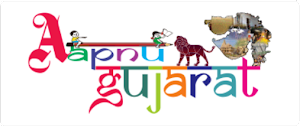9-20-31 NA TAMAM GRADE MATE VERY USEFUL BLANK ALL PATRAKO
A salary is a form of payment from an employer to an employee, which can be specified in an employment contract. It is contrasted with the piece rate wage, where each job, hour or other unit is paid separately, rather than periodically. From a business management point of view, salary can also be viewed as the cost of acquiring and retaining human resources to run operations, and is later called personnel expense or salary expense. In accounting, wages are recorded in payroll accounts.
Download Salary Book
Salary is a fixed amount of money or compensation paid to an employee by an employer in exchange for work performed. Salary is commonly paid in fixed intervals, for example monthly payments of one twelfth of the annual salary.
UCHCHTAR PAGAR DHORAN DARKHAST ALL PATRAKO
Salary is generally determined by comparing market pay rates for people doing similar work in similar industries in the same region. Salary is also determined by leveling the pay rates and salary ranges established by an individual employer. Salary is also affected by the number of people available to perform the specific job at the employer's workplace.
Vidhyasahayak Full Pay Darkhast
While there is no first pay stub for the first exchange of work for pay, the first wage labor would have required a society advanced enough to have a barter system that would allow for the uniform exchange of goods or services between merchants. More significantly, it presupposes the existence of organized employers — perhaps a government or a religious body — that would facilitate contract labor exchanges on a regular enough basis to constitute wage employment. From this, most infer that the first salary would have been paid in a town or city during the Neolithic Revolution, sometime between 10,000 BC. C. and 6,000 a.c.
9-20-31 YEAR UCHCHTAR PAGAR DHORAN ALL PATRAKO DOWNLOAD PDF
A clay tablet with cuneiform inscriptions dated around 3100 BC. C. provides a record of daily beer rations for Mesopotamian workers. Beer is represented by a vertical mug with a pointed base. The symbol for rations is a human head eating from a bowl. Round and semi-circular prints represent measurements.
By the time of the Hebrew Book of Ezra (550 to 450 BC), a person's salt was synonymous with obtaining sustenance, collecting, or serving that person. At that time, salt production was strictly controlled by the monarchy or the ruling elite. Depending on the translation of Ezra 4:14, the servants of King Artaxerxes I of Persia explain their loyalty in various ways such as "because we are salted with the salt of the palace" or "because we have support from the king" or "because we are responsible to him. king ".
A salary is a form of payment from an employer to an employee, which can be specified in an employment contract. It is contrasted with the piece rate wage, where each job, hour or other unit is paid separately, rather than periodically. From a business management point of view, salary can also be viewed as the cost of acquiring and retaining human resources to run operations, and is later called personnel expense or salary expense. In accounting, wages are recorded in payroll accounts.
Download Salary Book
Salary is a fixed amount of money or compensation paid to an employee by an employer in exchange for work performed. Salary is commonly paid in fixed intervals, for example monthly payments of one twelfth of the annual salary.
UCHCHTAR PAGAR DHORAN DARKHAST ALL PATRAKO
Salary is generally determined by comparing market pay rates for people doing similar work in similar industries in the same region. Salary is also determined by leveling the pay rates and salary ranges established by an individual employer. Salary is also affected by the number of people available to perform the specific job at the employer's workplace.
Vidhyasahayak Full Pay Darkhast
While there is no first pay stub for the first exchange of work for pay, the first wage labor would have required a society advanced enough to have a barter system that would allow for the uniform exchange of goods or services between merchants. More significantly, it presupposes the existence of organized employers — perhaps a government or a religious body — that would facilitate contract labor exchanges on a regular enough basis to constitute wage employment. From this, most infer that the first salary would have been paid in a town or city during the Neolithic Revolution, sometime between 10,000 BC. C. and 6,000 a.c.
9-20-31 YEAR UCHCHTAR PAGAR DHORAN ALL PATRAKO DOWNLOAD PDF
A clay tablet with cuneiform inscriptions dated around 3100 BC. C. provides a record of daily beer rations for Mesopotamian workers. Beer is represented by a vertical mug with a pointed base. The symbol for rations is a human head eating from a bowl. Round and semi-circular prints represent measurements.
By the time of the Hebrew Book of Ezra (550 to 450 BC), a person's salt was synonymous with obtaining sustenance, collecting, or serving that person. At that time, salt production was strictly controlled by the monarchy or the ruling elite. Depending on the translation of Ezra 4:14, the servants of King Artaxerxes I of Persia explain their loyalty in various ways such as "because we are salted with the salt of the palace" or "because we have support from the king" or "because we are responsible to him. king ".
